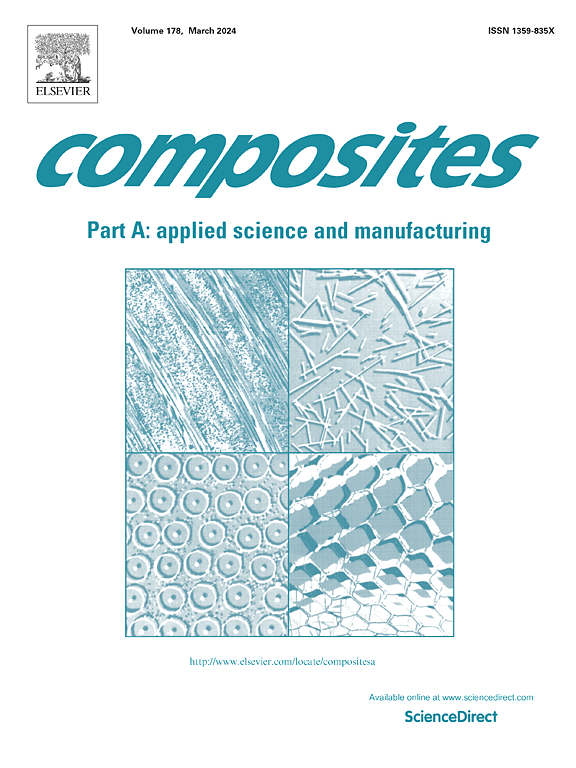SMC process simulation validated by image analysis
IF 8.1
2区 材料科学
Q1 ENGINEERING, MANUFACTURING
Composites Part A: Applied Science and Manufacturing
Pub Date : 2025-04-26
DOI:10.1016/j.compositesa.2025.108915
引用次数: 0
Abstract
A new process simulation tool has been developed which predicts the fiber bundle orientation in sheet molding compounds depending on part geometry and production process. The method simulates the three-dimensional flow and movement of resin and fiber bundles respectively allowing for different velocities of these two components. The work describes how to derive the effective permeabilities of the fiber bundles using microscale simulations. Measurements of the viscosity are required only for the resin and not the full suspension. The predicted fiber orientations are validated via comparisons to computed tomography scans. In addition, the flow front and filling behavior of a realistic automotive panel geometry at the component scale is predicted. The new process simulation method yields improved input data for subsequent structural simulations of sheet molding compound components and allows the consideration of fiber bundle orientation in the structural analysis of SMC components.

通过图像分析验证了SMC过程仿真
开发了一种新的过程模拟工具,可以根据零件几何形状和生产工艺预测板材成型化合物中纤维束的方向。该方法分别模拟了树脂束和纤维束的三维流动和运动,允许这两种成分的不同速度。该工作描述了如何利用微尺度模拟得出纤维束的有效渗透率。粘度的测量只需要树脂,而不是整个悬浮液。通过与计算机断层扫描的比较,验证了预测的纤维取向。此外,在零件尺度上,预测了实际汽车面板几何形状的流场和填充行为。新的过程模拟方法为后续的片状成型复合部件的结构模拟提供了改进的输入数据,并允许在SMC部件的结构分析中考虑纤维束方向。
本文章由计算机程序翻译,如有差异,请以英文原文为准。
求助全文
约1分钟内获得全文
求助全文
来源期刊

Composites Part A: Applied Science and Manufacturing
工程技术-材料科学:复合
CiteScore
15.20
自引率
5.70%
发文量
492
审稿时长
30 days
期刊介绍:
Composites Part A: Applied Science and Manufacturing is a comprehensive journal that publishes original research papers, review articles, case studies, short communications, and letters covering various aspects of composite materials science and technology. This includes fibrous and particulate reinforcements in polymeric, metallic, and ceramic matrices, as well as 'natural' composites like wood and biological materials. The journal addresses topics such as properties, design, and manufacture of reinforcing fibers and particles, novel architectures and concepts, multifunctional composites, advancements in fabrication and processing, manufacturing science, process modeling, experimental mechanics, microstructural characterization, interfaces, prediction and measurement of mechanical, physical, and chemical behavior, and performance in service. Additionally, articles on economic and commercial aspects, design, and case studies are welcomed. All submissions undergo rigorous peer review to ensure they contribute significantly and innovatively, maintaining high standards for content and presentation. The editorial team aims to expedite the review process for prompt publication.
 求助内容:
求助内容: 应助结果提醒方式:
应助结果提醒方式:


